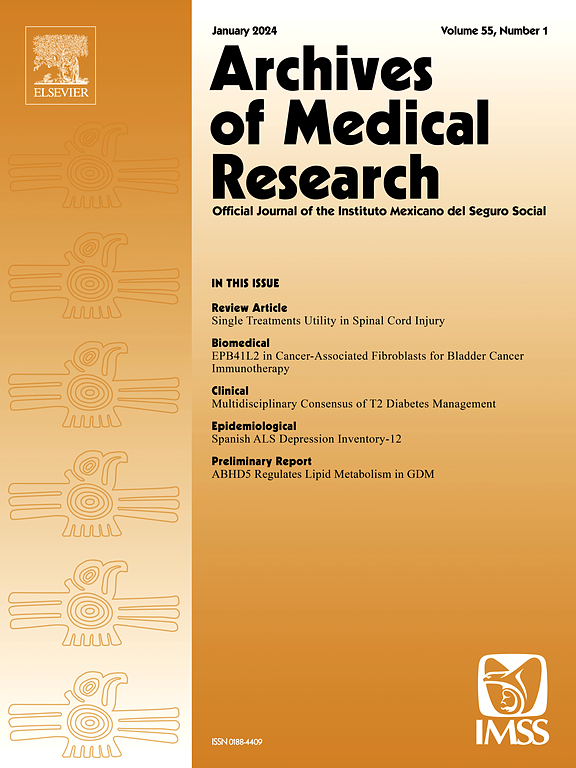Health Outcomes in Fragility Fractures in the Spanish Registry of Osteoporotic Fractures According to the FLS Care Model
IF 3.4
3区 医学
Q1 MEDICINE, RESEARCH & EXPERIMENTAL
引用次数: 0
Abstract
Background
Fracture Liaison Services (FLS) are the gold standard for secondary fracture prevention, but their characteristics vary depending on the care model. This study describes the differences between Orthogeriatric (FLS-ORT) and Bone Metabolism (FLS-MET) models in Spain, based on data from the national osteoporotic fracture registry.
Methods
We conducted a retrospective, multicenter cohort study including 8,962 patients aged ≥50 years with fragility fractures from 25 active FLS in Spain (2019–2023). Patients were classified based on the care model: FLS-ORT (n = 3,695) or FLS-MET (n = 5,267). Baseline characteristics, fracture types, treatment initiation, adherence, and 12-month outcomes were compared.
Results
FLS-ORT patients were older (85 vs. 78 years, p <0.001), had more comorbidities, and a higher risk of falls. Hip fractures were predominant in FLS-ORT (75.8%), while vertebral fractures were more frequent in FLS-MET (p <0.001). Time from fracture to FLS assessment was shorter in FLS-ORT (0.1 vs. 1.6 months, p <0.001). At 12 months, fracture recurrence was higher in FLS-ORT (7.7 vs. 5.5 per 100 patient-years), and mortality was significantly greater (p <0.0001). However, osteoporosis treatment initiation (84.6%) and adherence (85.2%) were comparable across models.
Conclusions
FLS are the gold standard for secondary fracture prevention. Both FLS care models (FLS-ORT and FLS-MET) were effective in reducing the risk of new fractures in patients and minimizing the impact on the quality of life of patients who suffer a fragility fracture. Future integration into a unified model assessing all fractures is anticipated.
根据FLS护理模型,西班牙骨质疏松性骨折登记处脆性骨折的健康结果
背景:骨折联络服务(FLS)是二级预防骨折的金标准,但其特点因护理模式而异。本研究基于西班牙国家骨质疏松性骨折登记处的数据,描述了西班牙骨科(FLS-ORT)和骨代谢(FLS-MET)模型之间的差异。方法:我们进行了一项回顾性多中心队列研究,包括8962例年龄≥50岁的西班牙25例活动性FLS脆性骨折患者(2019-2023)。患者根据护理模式进行分类:FLS-ORT (n = 3,695)或FLS-MET (n = 5,267)。比较基线特征、骨折类型、治疗开始、依从性和12个月的结果。结果:FLS- ort患者年龄较大(85岁vs. 78岁)。结论:FLS是预防继发性骨折的金标准。两种FLS护理模式(FLS- ort和FLS- met)都能有效降低患者新骨折的风险,并最大限度地减少对脆性骨折患者生活质量的影响。预计未来将整合到评估所有裂缝的统一模型中。
本文章由计算机程序翻译,如有差异,请以英文原文为准。
求助全文
约1分钟内获得全文
求助全文
来源期刊

Archives of Medical Research
医学-医学:研究与实验
CiteScore
12.50
自引率
0.00%
发文量
84
审稿时长
28 days
期刊介绍:
Archives of Medical Research serves as a platform for publishing original peer-reviewed medical research, aiming to bridge gaps created by medical specialization. The journal covers three main categories - biomedical, clinical, and epidemiological contributions, along with review articles and preliminary communications. With an international scope, it presents the study of diseases from diverse perspectives, offering the medical community original investigations ranging from molecular biology to clinical epidemiology in a single publication.
 求助内容:
求助内容: 应助结果提醒方式:
应助结果提醒方式:


